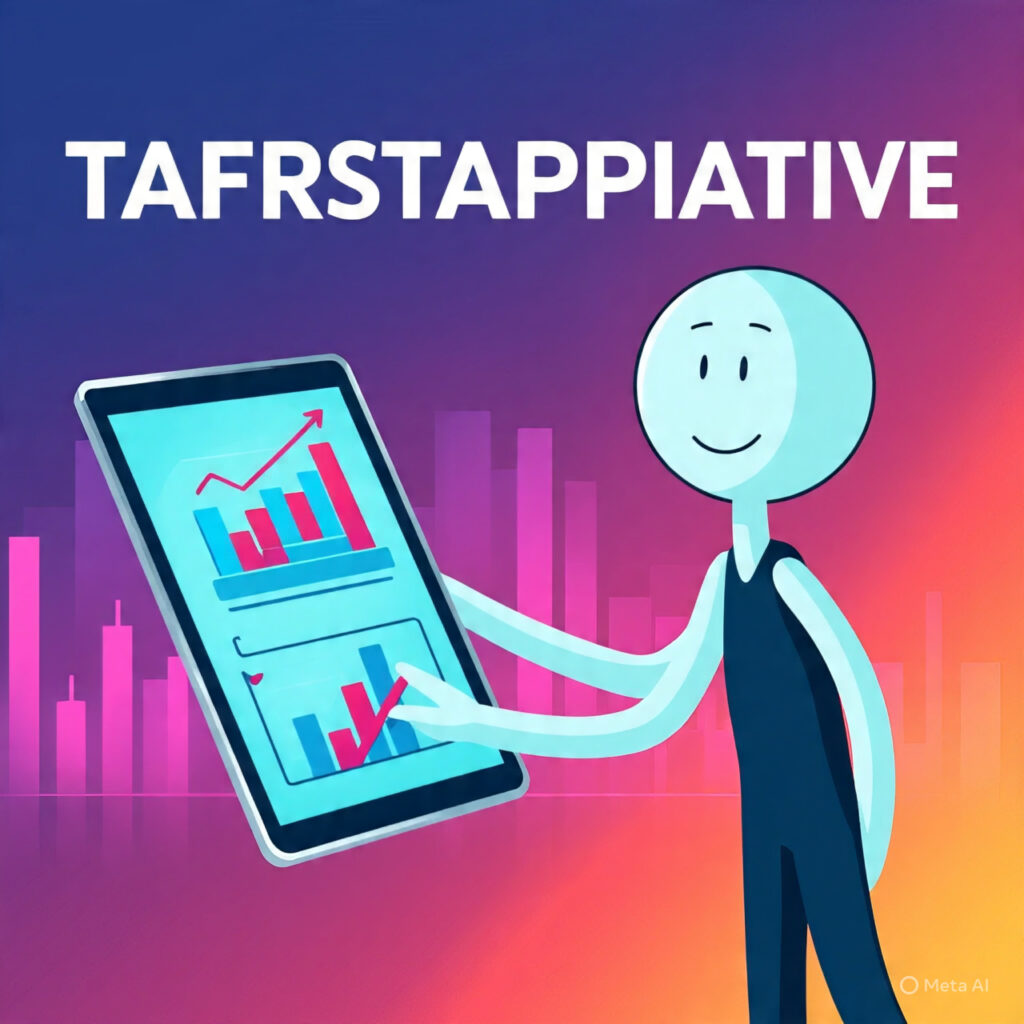Transformative Applications of AI in Marketing Contexts
1. Cognitive Consumer Profiling through Behavioral Analytics
AI-facilitated behavioral analytics systems deploy advanced machine learning methodologies—including convolutional neural networks (CNNs), decision tree ensembles, and econometric modeling—to decode latent consumer preferences and construct granular psychographic segmentations. Tools like Google Analytics, Zoho Analytics, and Hotjar employ these paradigms to track and infer behavioral cues with surgical precision.
- India-Specific Deployment: Flipkart’s application of dynamic Bayesian inference fused with collaborative filtering exemplifies adaptive real-time consumer mapping.
- ✅ Doctoral Insight: The amalgamation of fuzzy logic with CNN architectures enhances socio-cultural sensitivity and minimizes heuristic reductionism in psychographic modeling.

2. Hyper-Personalized Advertising via Programmatic Ecosystems
Through transformer-based attention architectures and real-time bidding algorithms, platforms such as Meta Ads and Google Ads enable context-aware, emotion-responsive, and dynamically optimized programmatic advertising.
- Localized Strategy: MSMEs across semi-urban geographies employ AI to calibrate CPA and ROAS dynamically.
- ✅ Advanced Technique: Embed ethnographic storytelling and linguistic plurality within programmatic advertising pipelines to enhance cultural semiotic fidelity.

3. Automated Content Generation via NLP and Generative AI
Sophisticated NLP-driven models—e.g., ChatGPT, Jasper, Copy.ai—enable idiomatic, dialect-sensitive, and context-adaptive content creation. These tools facilitate scalable multilingual communication across vernacular consumer bases.
- Use Case: A Jaipur-based boutique integrated AI content tools to produce regionally localized digital narratives, doubling outreach efficacy.
- ✅ Research Proposal: Fine-tune LLMs on Indic linguistic corpora to augment semantic depth and syntactic fidelity in hyperlocal content generation.
4. Intelligent Email Marketing Optimization
AI-augmented platforms such as Mailchimp and ConvertKit deploy supervised learning, evolutionary algorithms, and multi-armed bandits to algorithmically optimize dispatch timing, content personalization, and engagement trajectories.
- Technical Highlight: Reinforcement learning loops facilitate contextual content recalibration in real-time.
- ✅ Empirical Suggestion: Integrate multi-objective optimization frameworks for balancing open rate maximization with longitudinal conversion metrics.

5. Conversational AI for Real-Time Customer Interaction
Natural Language Understanding (NLU) and Generation (NLG)-based chatbots—such as Freshchat and WATI—support multi-lingual, emotionally intelligent, and real-time interactions, significantly reducing first-response latency.
- Efficiency Metric: Tier-1 resolution times improved by up to 75% through intelligent conversational routing.
- ✅ Human-Centric Design: Incorporate affective computing and sentiment-modulation architectures to manage emotionally charged interactions with adaptive empathy.
6. Social Media Optimization via Predictive Scheduling and Sentiment Analysis
AI systems integrate sentiment analysis, engagement forecasting, and adaptive content scheduling to modulate post timing and message tonality.

- Strategic Use: D2C brands utilize AI to maximize temporal resonance and contextual relevance.
- ✅ Scholarly Expansion: Construct cross-platform sentiment chronologies to unify narrative arcs across fragmented digital ecosystems.
7. Predictive Consumer Insights from Temporal Behavior Mining
Leveraging RNNs, autoencoders, and knowledge graph models, CRM suites such as Salesforce Einstein extrapolate future consumer actions based on historical trajectories.
- Festive Relevance: Nykaa adjusts media investments based on algorithmically forecasted demand spikes during regional festivals.
- ✅ Analytical Note: Synthesize temporal behavioral vectors with probabilistic ontologies to enhance foresight granularity.
8. Semantic Search Optimization and AI-Driven SEO Strategy
Employing semantic parsing, contextual embeddings, and transformer-based ranking (e.g., BERT, T5), marketers align content with evolving user intent and voice search patterns.
- Performance Output: Dramatic uptick in organic visibility in multilingual SERPs.
- ✅ Doctoral Hypothesis: Evaluate the comparative efficiency of monolingual versus polyglot LLMs in Indic SEO performance.
9. Automated A/B and Multivariate Testing at Scale
Advanced experimentation tools incorporate reinforcement learning, contextual bandits, and Bayesian inferencing to iterate design variants and UI elements without human mediation.
- Outcome: Continuous optimization loops embedded in UX ecosystems.
- ✅ Theoretical Frame: Model experimentation under conditions of stochastic volatility using non-parametric Bayesian frameworks.
10. Voice and Visual Search Optimization in Multilingual Ecosystems
AI-driven tools integrate speech recognition, computer vision, and multilingual NLP to decode natural queries and image-based interactions.
- Cultural Locality: Deployment of dialect-sensitive phoneme models in Hindi, Tamil, and Telugu.
- ✅ UX Research: Apply multimodal ethnographic design for inclusive access across digitally marginalized cohorts.
11. AI-Powered Loyalty and Rewards Personalization
Platforms like Paytm and Amazon dynamically personalize loyalty ecosystems using clustering, LTV forecasting, and adaptive incentive engineering.
- Strategic Logic: Personalized cashback and gamified reward systems based on real-time segmentation.
- ✅ Marketing Science: Explore Q-learning frameworks for optimizing reward strategies under fluctuating consumer utility preferences.
12. AI-Driven Visual Merchandising and Augmented Retail Interfaces
Using GANs, spatial analytics, and AR overlays, retailers reimagine store layouts and digital interfaces to maximize sensory engagement.
- Local Application: Lenskart and Tata Cliq use AI to dynamically arrange virtual shelves and real-time product visualization.
- ✅ Academic Lens: Simulate gaze fixation and path heuristics using predictive vision models to inform spatial configurations.
13. AI-Augmented Influencer Collaboration Models
AI systems assess influencer-brand fit through sentiment analytics, psychometric profiling, and social graph topology.
- Emergent Practice: Skincare brands apply predictive modeling to micro-influencer deployment across regional micro-markets.
- ✅ Methodological Insight: Embed affective semantics within graph neural networks to model influence diffusion and resonance.
14. AI-Enabled Customer Journey Mapping through Multi-Touch Attribution
Shapley value decomposition and causal graph modeling are employed to parse contribution margins across omnichannel paths.
- Strategic Advantage: Enables precision in resource allocation and conversion optimization.
- ✅ Systemic Integration: Construct AI-powered attribution simulators to iterate journey designs in volatile user funnels.
15. AI-Based Market Trend Anticipation and Competitive Intelligence
Platforms synthesize NLP pipelines, web scraping, and sentiment-based clustering to deliver real-time market signals and brand equity diagnostics.
- Practical Edge: FMCG firms leverage predictive sentiment graphs to anticipate trend inflections.
- ✅ Philosophical Note: Reconceptualize AI as an ontological vector through which marketing knowledge is constituted and contested.
📌 Prescriptive Roadmap for AI Integration
- Audit Systems Architecture – Evaluate cross-platform data interoperability.
- Align Strategic KPIs – Integrate AI capabilities with measurable brand outcomes.
- Deploy Agile Pilots – Implement test environments for iterative development.
- Institute Feedback Loops – Embed recursive learning structures.
- Invest in Ethical AI Training – Uphold transparency, accountability, and bias mitigation.
🇮🇳 Indigenous Success Case: Seema from Jaipur
Seema, an artisan entrepreneur in Jaipur, deployed a combination of ChatGPT, Canva AI, and Mailchimp to produce regionally tailored newsletters and hyper-contextual product showcases. Her engagement metrics tripled within a quarter, demonstrating the accessibility and efficacy of AI for small-scale Indian enterprises.
Insert Visual: Seema navigating AI marketing dashboards
🧰 Entry-Level AI Tools for Marketing Excellence
| Tool | Functionality |
|---|---|
| ChatGPT | AI-driven content ideation |
| Canva AI | Automated visual design generation |
| Mailchimp | Predictive email marketing |
| vidIQ | AI-enhanced video performance insights |
| SEMrush | SEO automation and semantic analytics |
Insert Visual: Comparative dashboard interface
🌟 Conclusion
Artificial Intelligence no longer represents a supplementary tactical asset; it embodies the axiomatic core of contemporary marketing philosophy. In India’s pluralistic and digitizing economy, AI functions both as infrastructure and interpretive agent—reshaping not only operational efficiency but also epistemological boundaries. For doctoral researchers, policy engineers, and brand custodians alike, AI heralds a reconstitution of marketing logics, anchored in cognition, computation, and culture.
👉 Strategic Next Steps
- 📥 Download: “Doctoral Blueprint on AI in Indian Marketing” (PDF)
- 📚 Explore: “AI and Semiotic Shifts in Regional Brand Discourse” (Advanced Research Monograph)
- 💬 Contribute: Submit ethnographic case studies on AI-led transformations
Insert Visual: Quote graphic – “Artificial Intellig
